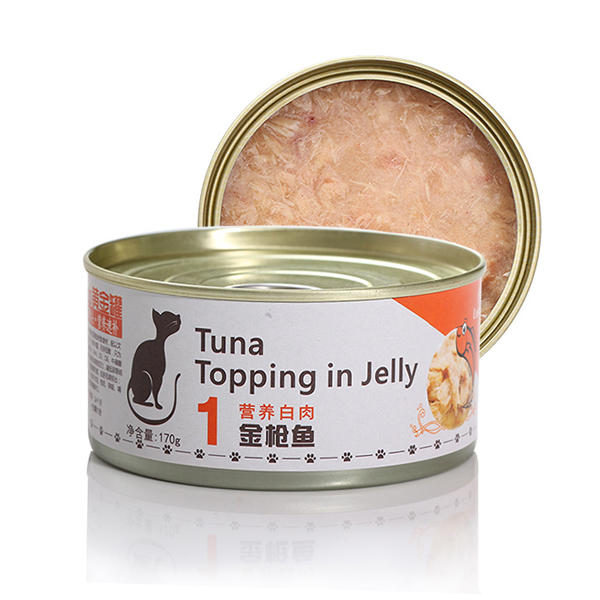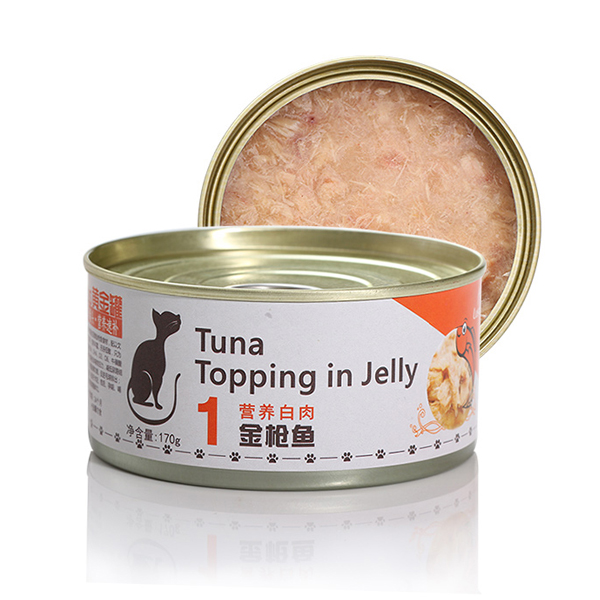AKRANES, ICELAND — With an extensive background in canned seafood products for humans, Akraborg is hoping to leverage its operations to expand its business into pet nutrition. The company currently produces complementary pet food products, but has high hopes that its sustainable operations, optimized supply chain and high-quality formulations will pave the way for consumers seeking more sustainable and healthier pet food formulas.
Founded in 1989, Akraborg is the world’s largest manufacturer of premium-quality canned cod liver products for brands and private labels throughout the globe. Lýsi, the world’s leading producer of fully refined fish oils for humans, owns a majority stake in the company, while continuously considering new possibilities for its oils within the pet segment. Officer operates as the company’s part owner, providing marketing and sales capabilities. Dried Dog Snacks

“We see ourselves as very market driven and we’re very good at scaling up,” said Rasmus Thomsen, business development and sales manager at Officer. “If you look at our history in cod liver, we started as a small business and got very good by investing in the right equipment, know-how and technology to sell our canned seafood all around the world.”
According to Thomsen, Akraborg and Officer are hoping to do the same within pet food.
Akraborg operates two facilities in Akranes and Ólafsvík, Iceland, as well as a pet nutrition facility, which recently opened in 2021. Located wall to wall with the facility in Akranes, the state-of-the-art pet food facility features the same production processes for Akraborg’s canned seafood products.
The purpose-built pet food facility houses high-speed equipment, boasting an hourly capacity of 5,000 units of product and a current annual capacity of 10 million pouches. It can handle various packing sizes from 60 to 300 grams (about 2.12 to 10.58 oz) and can package pet food products in lithographic doypacks and shelf-ready display boxes.
With global pet ownership skyrocketing and consumer demand for more high-quality products rising, Akraborg saw an opportunity to put its capabilities to the test with complete-and-balanced pet nutrition, while also contributing to sustainability.
“The world’s growing population is in need of proteins, and we see a possible way of producing human-grade quality pet food products based on fresh fish materials that were previously frozen and downgraded quality wise,” Thomsen said.
Akraborg’s operations are built with sustainability top of mind. From material souring to production, the company’s goal is to offer high-quality products based on fresh raw materials while reducing its impact on the environment.
Beginning with its supply chain, Akraborg uses secondary supply streams, like those for cod liver which once would otherwise be wasted, to produce its canned seafood products for humans.
“Our majority owner, Lýsi, is by far the biggest fish oil producer in Iceland,” Thomsen explained. “They utilize fish products from all around Iceland and Akraborg utilize the liver from the cod fisheries.
“We don’t buy the primary raw material from the fishermen, we buy the secondary,” he added. “It’s not secondary quality, but [fishermen] don’t go out to sea to catch cod liver, they go out to catch the cod and we take the liver. The mentality in our group [of companies] is all about full utilization.”
Akraborg’s raw materials are sourced from various local suppliers throughout Iceland, from large fisheries and small boats to gutting stations. Because of its proximity to various fisheries and suppliers, Akraborg doesn’t need to rely on frozen seafood materials. In fact, the company strictly uses fresh supplies to reduce its energy consumption.
“Our mindset is intent on realizing the best quality out of the raw materials that are available from catch and production,” Thomsen shared. “This goes all the way back to working with the fishermen on how to maintain, pack and store our raw materials on the fishing vessels, to minimizing the total time in our supply chain before the product is produced and packed.”
The company doesn’t just rely on local suppliers to reduce its environmental footprint; it also ensures that its supplies come from more eco-friendly means.
“The cod we use is all sustainable approved by the Marine Stewardship Council (MSC), whereas the trout and salmon are both farmed under sustainable and environmentally focused facilities,” Thomsen shared.
According to Thomsen, the pet food side of the business will make even further use of Akraborg’s secondary supply chain, advancing the company’s goals for complete usage of its raw materials.
“Our raw materials are never the primary product from the fish, so our utilization aspect is the most sustainable part [of our operations],” he said. “Fresh is a keyword, as we don’t use frozen raw materials where energy has been used to freeze product, and our raw materials are all local.
“We believe it is our responsibility to make the most out of every kilogram of fish that is caught or farmed, and we believe in producing products from fresh raw material in the location where the raw material originates, using the lowest amount of CO2 possible,” he added.
The Icelandic location of Akraborg’s pet food facility also aids in the company’s environmental goals. According to Thomsen, Iceland is currently one of the “frontrunners of the world when it comes to green energy,” including geothermal energy, wind power and hydropower, some of which the facility uses to produce its products.
“About 85% of the total primary energy supply in Iceland is derived from domestically produced renewable energy sources,” Thomsen said. “This is the highest share of renewable energy in any national total energy budget. Producing pet food in a country like Iceland, where we play a part of reducing the usage of CO2 to feed the pets of the world, makes us certain that we are on the right path and in the right place.”
Though Akraborg is currently producing complementary wet pet food products, the company hopes to enter the completed-and-balanced segment of the industry in 2023. Through Officer, Akraborg will produce, sell and market its pet foods to private labels throughout Europe.
Akraborg currently uses Atlantic cod, Atlantic salmon, redfish and Atlantic trout to formulate its pet nutrition products. According to Officer, the Atlantic cod and redfish are wild caught in Iceland and the Atlantic salmon and trout are farmed. These species of fish boast many health benefits, including a low levels of calories and fat and a high amounts of Omega 3 fatty acids.
By using the same materials for its complementary products, Akraborg’s complete pet foods will also carry the same high-quality attributes, according to Thomsen.
“The good thing about our complementary products is that they are 100% natural, grain-free and based on 96% to 99% fresh single protein fish source,” he explained. “This makes our products unique, high-quality, easily digestible and rich in Omega 3 fatty acids.”
Not only are Akraborg’s pet food products high-quality and produced to ensure sustainability, but they are also made with food safety in mind. The company’s pet food facility carries numerous certifications, including those from the United States Food and Drug Administration (FDA), the Marine Stewardship Council (MSC) and the International Featured Standard (IFS FOOD). These certifications also allow the company to market its pet food products as human-grade.
“Recently, our pet food production was added to our IFS-7 FOOD certification where we achieved a higher-level grade,” Thomsen said. “We are big believers that quality certifications are very important in a turbulent world. Furthermore, we believe that it is important to have an ambitious corporate climate action plan, so that both pets and consumers can enjoy our products with confidence and good conscience.”
Like its human seafood and complementary pet products, Akraborg hopes to include an elevated level of high-quality seafood ingredients to boost its pet food products’ overall protein content.
“We did a similar thing in the human sector; we boosted the actual fish content in well know value-added products and that really boosted our sales and market awareness,” Thomsen shared. “That’s something we’re trying to look into [for pet food].”
Consumer trends fueling the future
Alongside its know-how in human food manufacturing, Akraborg’s entrance into pet food is also being fueled by consumer demand throughout Europe and around the globe. According to Thomsen, pet parents throughout Europe are seeking food products made with renewable energy and more sustainably sourced materials, and this will be relevant for what is bought for their pets as well.
“Awareness from pet owners… is getting bigger and bigger to buy sustainable and to buy products with a low carbon footprint,” he shared.
“We are experiencing an energy crisis all over in Europe, so it makes it very interesting to produce in Iceland,” Thomsen added. “Eighty-five percent of all energy, including heat, water and gas, is renewable in Iceland, so we have an advantage right now, also keeping stability in mind. But, at the same time, we also see an opportunity in branding and our customer’s branding to mention that we are actually using renewable energy and keeping carbon footprint down”
Akraborg is also eyeing other opportunities to expand its reach throughout the globe.
“Our aim is to increase our market in Europe, but definitely to also enter the US market,” Thomsen said. “Since our factory is already FDA-approved and we already export our canned cod liver to the United States, we see this as a natural next step.”
Thomsen shared the company will keep optimizing its supply chain by seeking more ways to fully utilize raw materials and advance its sustainable operations, while also catering to its current customers.
“Firstly, our focus is to increase our market through new and existing customers on the complementary range that we do today,” he said. “But we are looking into what other opportunities our local raw materials are able to give us by utilizing secondary raw materials in primary quality.”
As Akraborg continues to scale up and optimize its current production, the company continues to explore more opportunities in pet nutrition, including treats, to help its customers offer higher-quality products to consumers.
“We see a trend of creating better pet food products that are eco-friendly and not pushing the protein needs of the world, and we want to support that,” Thomsen concluded.

Chicken Dog Food Read more news from pet food manufacturers.